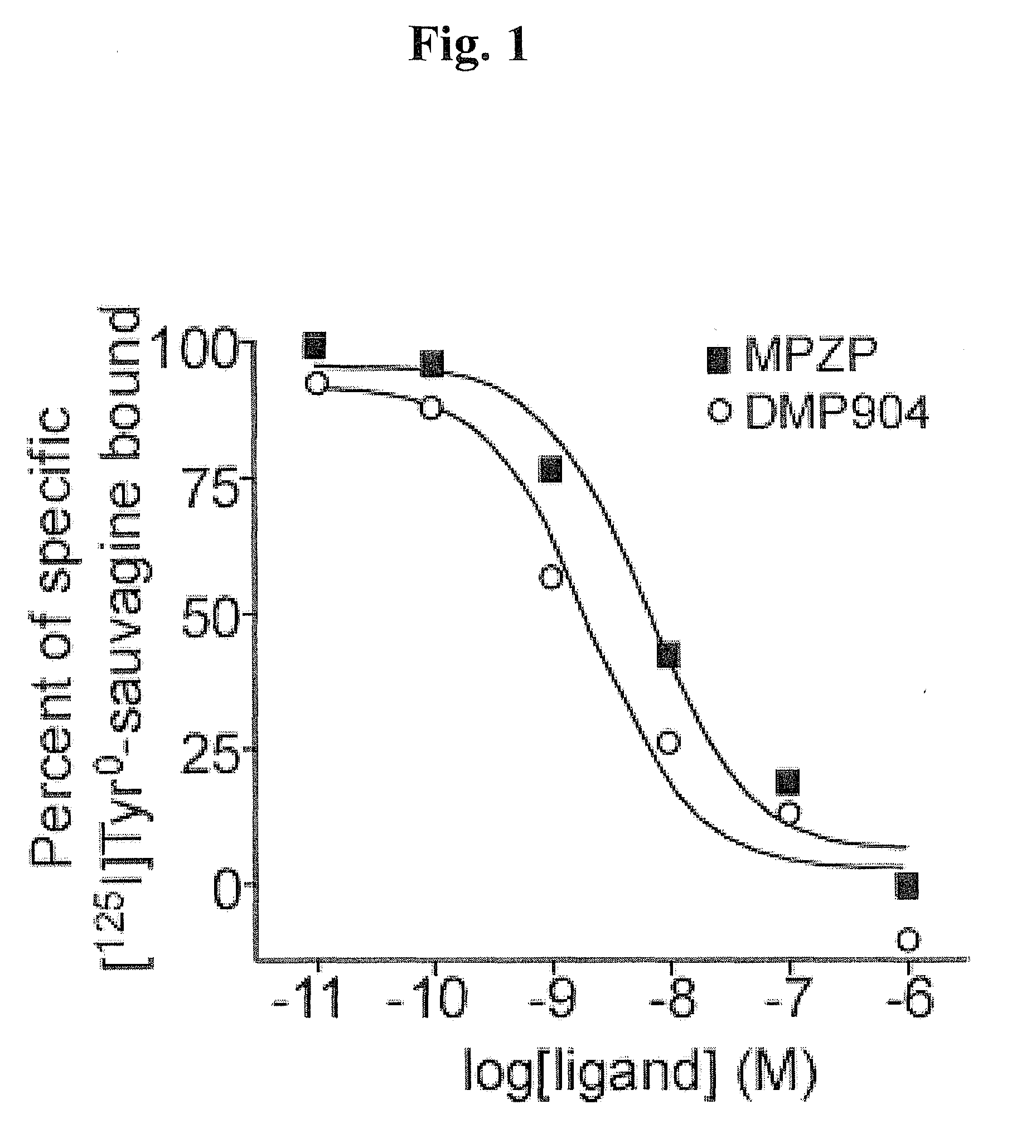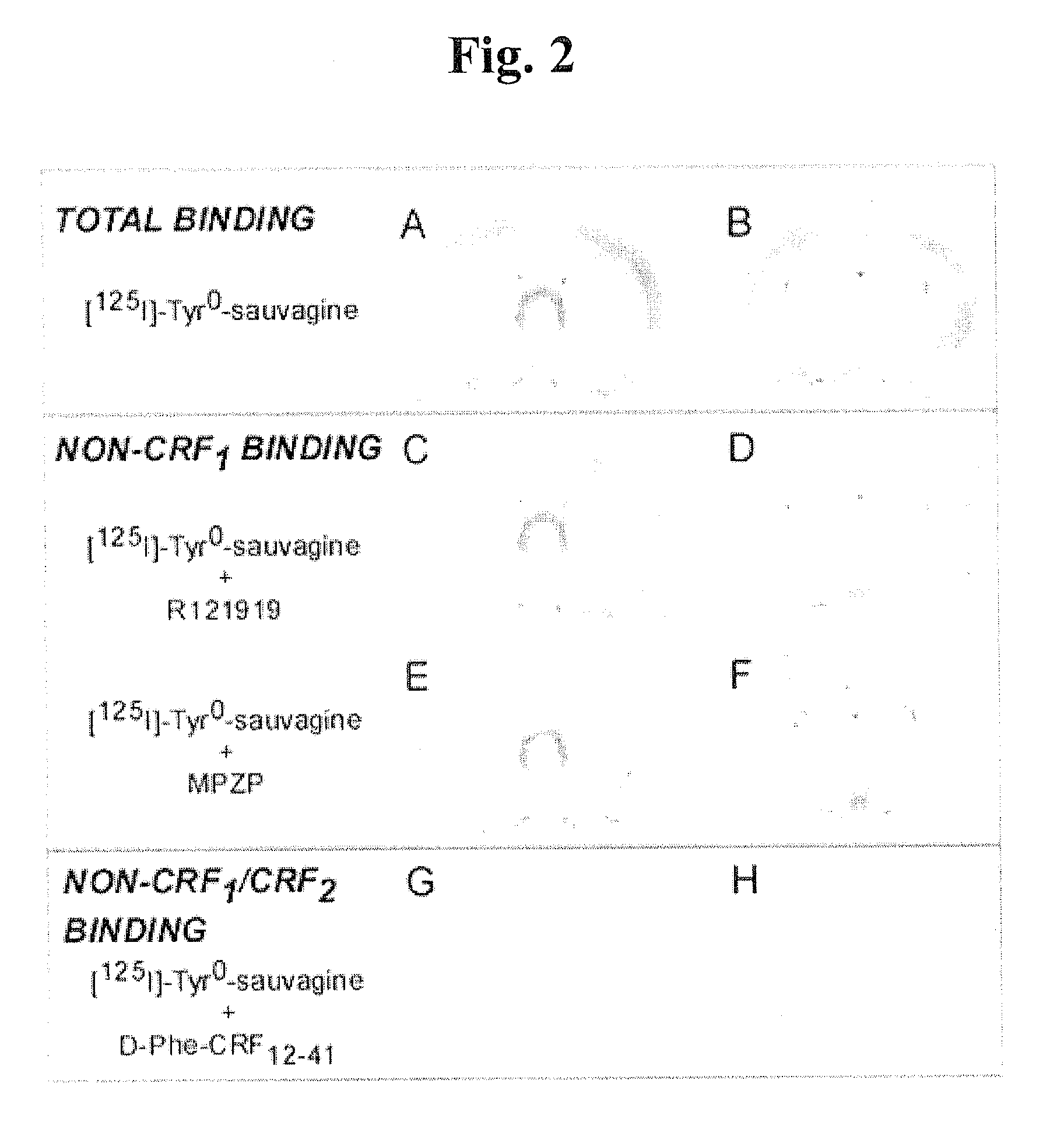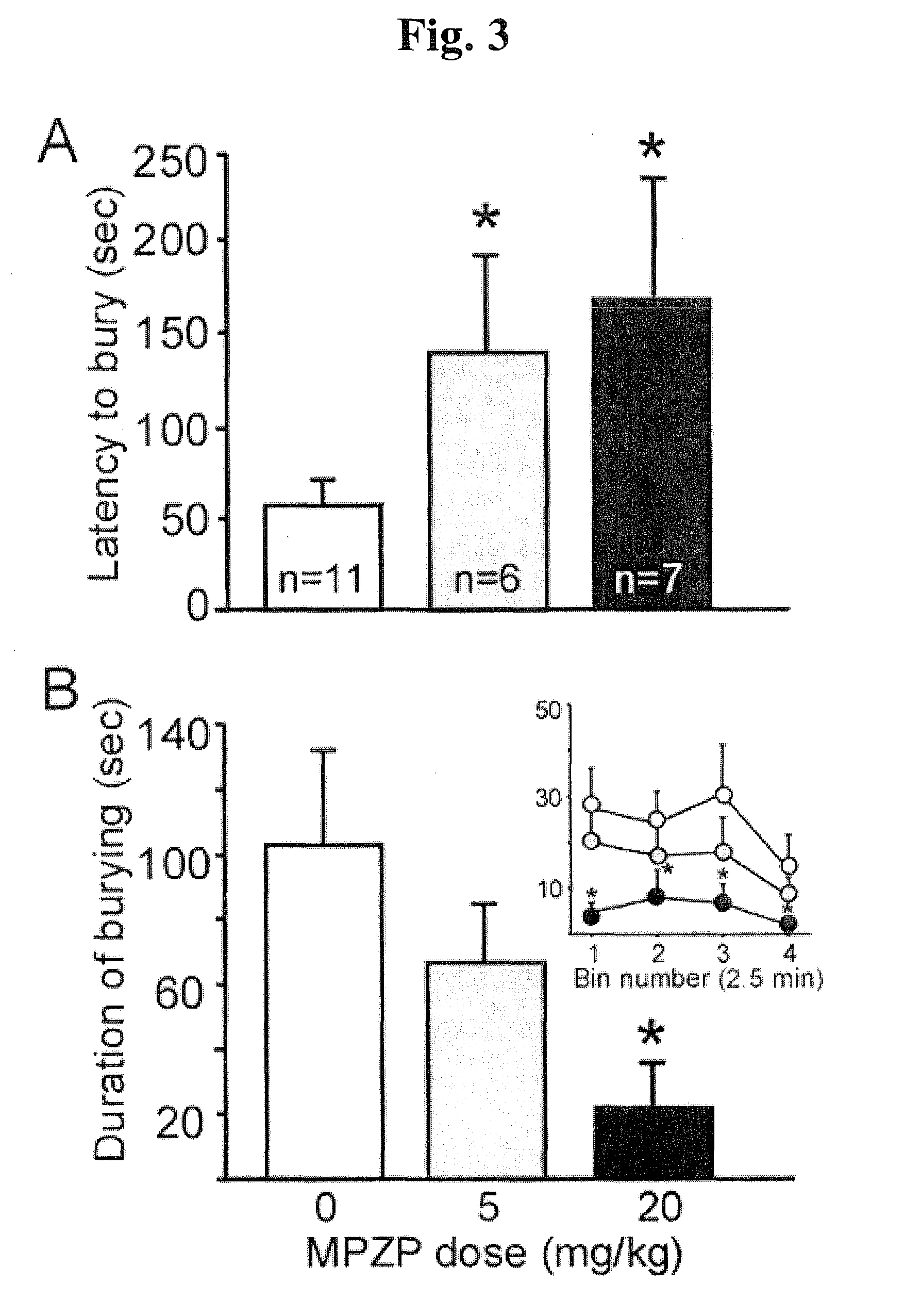Mpzp: a small molecule corticotropin-releasing factor type 1 receptor (CRF1) antogonist
a corticotropin-releasing factor and small molecule technology, applied in the field of mpzp, can solve the problems of limiting the clinical effectiveness of treating central nervous system (cns) disorders, unable to penetrate the blood-brain barrier, and the neurobiological mechanism underlying how nicotine produces dependence remains poorly understood
- Summary
- Abstract
- Description
- Claims
- Application Information
AI Technical Summary
Benefits of technology
Problems solved by technology
Method used
Image
Examples
Embodiment Construction
[0053]The present invention contemplates a method of treatment using a compound corresponding in structure to Formula I and the pharmaceutically acceptable acid addition salts thereof,
wherein
[0054]W and Z are independently N or C, and X and Y are independently N or CH, with the proviso that at least two and no more that three of W, X, Y and Z are N;
[0055]R1 is NR7R8 where each of R7 and R8 is independently a straight, branched or cyclic substituent that is selected from the group consisting of C1-C4 alkyl or C1-C4 alkenyl, methoxy-C1-C3 alkyl or C1-C3 alkenyl, mono-or dihydroxy-C1-C3 alkyl or C1-C3 alkenyl, N-methylamino-C1-C3 alkyl or C1-C3 alkenyl, 2- or 3-tetrahydrofuryl, and 2- or 3-tetrahydrofurfuryl, or NR7R8 together form a 5- or 6-membered ring containing zero or one oxygen atom in the ring, which ring is unsubstituted or substituted with a hydroxyl group, a hydroxymethyl group or a hydroxyethyl group;
[0056]Ar— is
[0057]wherein
[0058]A is CH or N,
[0059]R2 is selected from the ...
PUM
| Property | Measurement | Unit |
|---|---|---|
| Acidity | aaaaa | aaaaa |
| Composition | aaaaa | aaaaa |
| Structure | aaaaa | aaaaa |
Abstract
Description
Claims
Application Information
 Login to View More
Login to View More - R&D
- Intellectual Property
- Life Sciences
- Materials
- Tech Scout
- Unparalleled Data Quality
- Higher Quality Content
- 60% Fewer Hallucinations
Browse by: Latest US Patents, China's latest patents, Technical Efficacy Thesaurus, Application Domain, Technology Topic, Popular Technical Reports.
© 2025 PatSnap. All rights reserved.Legal|Privacy policy|Modern Slavery Act Transparency Statement|Sitemap|About US| Contact US: help@patsnap.com



